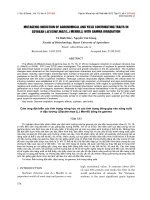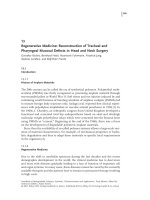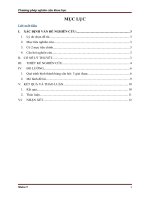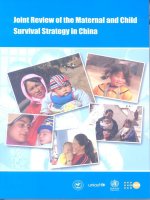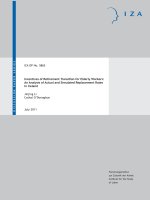Processing of Makhana and value chain financing in Bihar
Bạn đang xem bản rút gọn của tài liệu. Xem và tải ngay bản đầy đủ của tài liệu tại đây (152.62 KB, 5 trang )
����������������������������������������������������������������������������������������������������������������������������������������������������������������������������������������������������������������������������������������������������������������������������������������������������������������������������������������������������������������������������������������������������������������������������������������������������������������������������������������������������������������������������������������������������������������������������������������������������������������������������������������������������������������������������������������������������������������������������������������������������������������������������������������������������������������������������������������������������������������������������������������������������������������������������������������������������������������������������������������������������������������������������������������������������������������������������������������������������������������������������������������������������������������������������������������������������������������������������������������������������������������������������������������������������������������������������������������������������������������������������������������������������������������������������������������������������������������������������������������������������������������������������������������������������������������������������������������������������������������������������������������������������������������������������������������������������������������������������������������������������������������������������������������������������������������������������������������������������������������������������������������������������������������������������������������������������������������������������������������������������������������������������������������������������������������������������������������������������������������������������������������������������������������������������������������������������������������������������������������������������������������������������������������������������������������������������������������������������������������������������������������������������������������������������������������������������������������������������������������������������������������������������������������������������������������������������������������������������������������������������������������������������������������������������������������������������������������������������������������������������������������������������������������������������������������������������������������������������������������������������������������������������������������������������������������������������������������������������������������������������������������������������������������������������������������������������������������������������������������������������������������������������������������������������������������������������������������������������������������������������������������������������������������������������������������������������������������������������������������������������������������������������������������������������������������������������������������������������������������������������������������������������������������������������������������������������������������������������������������������������������������������������������������������������������������������������������������������������������������������������������������������������������������������������������������������������������������������������������������������������������������������������������������������������������������������������������������������������������������������������������������������������������������������������������������������������������������������������������������������������������������������������������������������������������������������������������������������������������������������������������������y selected
sample of 60 Makhana processors. The
respondents were selected using multistage
random sampling. From each district one
block was selected purposively on the basis of
estimated area under Makhana cultivation.
Subsequently from each block two to three
villages was selected purposively with the
same criteria of estimated area and
production.
The aim of studying economics of Makhana
processing activity and understand the
profitability of Makhana based processing
system and identify the major reason behind
high cost of processing. Therefore, deviating
from standard procedure of dividing cost of
processing into fixed and variable cost an
attempt was made in this study to identify and
document the cost associated with each
component of Makhana processing activity
was analyzed with the help of schedule
developed for this study.
Further the data related to work participation
of male female and child laborers was
collected in terms of per cent work
contribution. The data related to value chain
financing including, size of loan amount,
source of loans, loan duration, documentation
and collateral security were also collected
using semi structured interview schedule.
Results and Discussion
Work participation of adult male, female and
child labourers in the Makhana processing
activity was also studied. Contrary to the
Makhana production activity, the work
participation pattern in Makhana processing
was found to be entirely different. It was
observed that adult male labourers carried out
majority of work related to washing of raw
seed (74.03%), Sun drying and popping
(100.00℅)whereas
women
labourers’
participation was found to be significantly
high in grading (62.36%), first roasting
(74.45%), and second roasting (72.19%).One
of the serious issues of concern in Makhana
processing is participation of child labourers.
It was found that child labourers’
participation was significant in washing
(12.83%), grading(21.54%), first(13.08%) as
well as second roasting(14.41%) of seeds.
Makhana processing is the labour intensive
activity without any kind of processing
mechanization. The analysis of processing
activities reveals that, for processing each
quintal of raw seed of Makhana, total cost of
1323
Int.J.Curr.Microbiol.App.Sci (2020) 9(5): 1322-1326
Rs. 10296 is incurred of which majority of
cost (Rs. 7783) pertains to the purchase of
raw seeds, followed by labour charges (Rs.
2064). Cost associated with other aspects like
transportation, processing equipment, room
rent, procurement of packing material,
electricity etc. were far lower and each of
these contributed less than 5 per cent of total
cost of processing. The net returns calculated
using the findings of the study related to pop
recovery percentage and average sale price.
The average pop recovery percentage was 4045 kg/qtl of raw seeds and average sale price
was rupees 250 per kg of popped Makhana.
Analysis of economics of processing activity
revealed that the processors earn Rs. 204.14
per/q of raw seed processing after deducting
cost of processing from the gross return (i.e.
Rs10675.).
Table.1 Work Participation in Processing (n=60)
Sl. No.
Activity
Per cent work contribution
Adult male
Adult female
Children
1
Washing
74.03
13.14
12.83
2
Sun Drying
100.00
0.00
0.00
3
Grading
16.10
62.36
21.54
4
First Roasting
12.47
74.45
13.08
5
Seconding Roasting
13.40
72.19
14.41
6
Popping
100.00
0.00
0.00
Table.2 Economics of Makhana processing (n=60)
Sl. No.
1
2
3
4
5
6
7
8
9
10
11
12
13
14
Items
Labour Wages
Transportation
Processing equipment
Packaging
Fuel
Room Rent
Electricity
Cost of raw seed
Total cost of processing
Average production of popped Makhana per
quintal
Sale price (Rs./Unit)
Gross selling cost
Net Income per quintal popping
B:C ratio
1324
Mean cost
(Rs./q raw seed)
2064
82
45
73
204
30
16
7783
10296
40-45
Per cent
250
10,675
204.14
1:1.03
-
20.05
0.80
0.44
0.71
1.98
0.29
0.16
75.59
-
Int.J.Curr.Microbiol.App.Sci (2020) 9(5): 1322-1326
Table.3 Financing practice of processor (n=60)
Sl.
No.
1
Financing Body
Frequency
Money Lender
51
Per
scent
85.00
2
Financial Institution
0
0.00
0
4 to 18
3
Fellow Farmer & Friends
09
15.00
268333
40.44
In this study the average rate of interest
charged by various money lenders to the
borrowing processors was also studied. The
rate of interest charged by the money lender is
2 to 5 percent hence the table 2 reveals that
the average interest charged by private money
lenders was 44.64 percent. Due to this fact the
processor after processing of Makhana sell
pop immediately even if they are getting low
rate so that they can repay their debts paid.
Though the interest charged by the fellow
farmers was relatively low but it was also
exorbitantly high in absolute terms. Average
interest rate charged by fellow farmers and
friends was 40.44 percent. However, the
interest rate charged by the banking
institution were relatively small ranging
between 4 to 18 percent but unfortunately
none of the processors take advantage of it.
This study emphasized on describing the
existing scenario of Makhana processing. It
was observed that the cost of labor wages
associated
with
Makhana
processing
constitutes nearly 20 percent of total cost of
cultivation. This cost can be minimized by
mechanization of Makhana processing
activity.
The farmers preference to private money
lenders despite high interest rate have number
of policy implications of which important one
is that there is need to improvise a relation
between financial institutions and value chain
Average loan Average % interest rate
amount
per annum
257083
44.64
actors including Makhana growers and
processors so as to make financial lone more
accessible and affordable with minimal
paperwork.
References
Anonymous.2010. ICARNational Research
Centre for Makhana, Darbhanga.
Anonymous.2018. ICAR ResearchComplex
for Eastern Region Patna, Bihar.
Kumar, R.;K.Alama; V. V.Krishnab and
K.Srinivasa.2012. Value Chain Analysis
of Maize Seed Delivery System in
Public and Private Sectors in Bihar.
Agricultural
Economics
Research
Review, 25:387-398.
Minten, B.; K. M. Singh and R.Sutradhar.
2010. The Makhana Value Chain in
Bihar: An Assessment and Policy
Implications. Article in SSRN Electronic
Journal.
Rahaman, A. A. 2019. Coordination and
Impact of Agrifood Value Chains on
Farm Performance: Ph.D Thesis, The
Institute for Food Economics and
Consumption Studies of the ChristianAlbrechts-Universität Kiel Evidence
from Smallholder Rice Farmers in
Northern Ghana
Singh, A. 2014. Centre to boost ‘makhana’
cultivation.
Times
of
India
/>a/Centre-to-boost-makhana-cultivation.
Accessed 31 August 2014.
1325
Int.J.Curr.Microbiol.App.Sci (2020) 9(5): 1322-1326
How to cite this article:
Ravi Atal, Shridhar Patil, Subodh Kumar, Suman Lata and Sonam Roy. 2020. Processing of
Makhana and Value Chain Financing in Bihar. Int.J.Curr.Microbiol.App.Sci. 9(05): 1322-1326.
doi: />
1326
